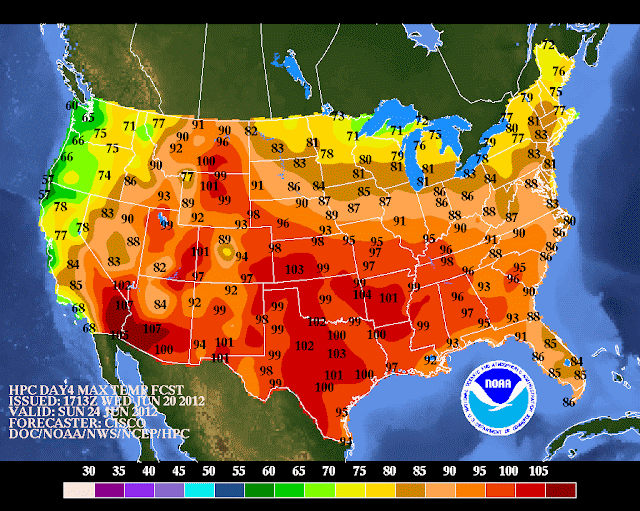2 Miles northeast of Etna ES .30
Alpine . 26
.
1.5 miles SE Thayne ES .21
Star Valley Ranch .15
Bedford .15
Etna Elementary School .14
Thayne Elementary School .07
Smoot .03
7 miles south of Smoot .02
The following map of June Rainfall for the state of Wyoming speaks for itself.
| Wyoming June Precipitation 2012 |
A normal June rainfall map below is used as a comparison
| Normal June Rainfall |
| Percent of Normal June Precipitation 2012 |
The Bedford .15 was from the official climatological station and is by far the least reported for any June since the station was installed in 1975(37 years of record). June averages about 2 inches at Bedford; the previous driest was June 1978 with .48.
Not only was June very dry but it was very sunny. Following are the graphs of solar insulation for 2011 and 2012
| Solar Insulation 2011 |
| Solar Insulation 2012 |
With predominance of clear skies and dry conditions, large diurnal temperature ranges occurred.
Below is the Climatological Summary for Thayne Elementary so far in 2012
| Thayne Weather Statistics in 2012 through June |
Note that the average diurnal range for June at Thayne ES was over 42F degrees. One third of the overnight lows were freezing or lower. The last day of the month was the hottest with a high of 91.6 some 56 degrees above the morning low of 35.5!
It has been 3 weeks since the last drop of rain fell in Star Valley. July is expected to begin hot and dry. However there are indications that the Southwestern Monsoon will kick in during the coming week. Southerly winds to the west of the large upper high over the plains will favor increasing chances of thunderstorms into western Wyoming by or shortly after the 4th of July.






















